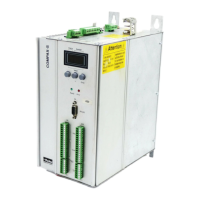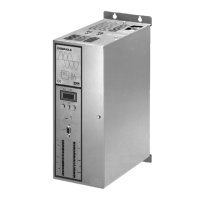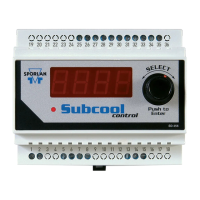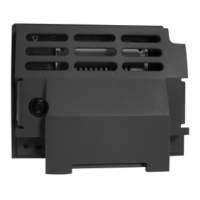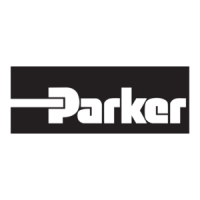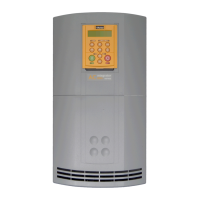Parker EME
Introduction
192-121102 N04 June 2008 7
5.10.6. Master signal source........................................................................................... 235
5.10.6.1 Setting the position of the selected master source
(C3_SetMaster)......................................................................................... 236
5.10.6.2 Recording the position of the selected master source
(C3_MasterControl) .................................................................................. 237
5.10.6.3 Control of the cam generator (C3_CamTableSelect) ............................... 240
5.10.6.4 C3_MasterConfig...................................................................................... 243
5.10.6.5 Master signal phase shift (MC_Phasing).................................................. 244
5.10.7. Alignment of the slave axis ................................................................................ 246
5.10.7.1 Start cam / coupling .................................................................................. 246
5.10.7.2 Exiting the active curve with coupling movement (C3_CamOut) ............. 257
5.10.8. 10 Steps for cam generation .............................................................................. 261
5.10.8.1 Step 1: C3 ServoManager ........................................................................ 261
5.10.8.2 Step 2: Connect motor.............................................................................. 261
5.10.8.3 Step 3: Supply & I/O wiring....................................................................... 261
5.10.8.4 Step 4: RS232 connection & C3 ServoManager ...................................... 261
5.10.8.5 Step 5: Set Compax3 device type ............................................................ 262
5.10.8.6 Step 6: Configuration ................................................................................ 262
5.10.8.7 Step 7: Selecting Master signal source .................................................... 262
5.10.8.8 Step 8: Generating the cam...................................................................... 262
5.10.8.9 Step 9: Create IEC program ..................................................................... 263
5.10.8.10 Step 10: Starting and monitoring cam ...................................................... 263
5.10.9. Cam applications................................................................................................. 264
5.10.9.1 Example 1: Single start of a closed cam................................................... 264
5.10.9.2 Example 2: Change between single start of an open cam and
POSA ........................................................................................................ 267
5.10.9.3 Example 3: Single Start for run through curve 5 times............................. 269
5.10.9.4 Example 4: Composing curves ................................................................. 271
5.10.9.5 Example 5: Cyclic operation with event-triggered change of curve.......... 274
5.10.9.6 Example 6: Operation with curve segments and standstill area............... 276
5.10.9.7 Example 7: Curve operation with slave reg synchronization.................... 279
5.10.9.8 Example 8: Curve operation with master reg synchronization ................. 281
5.10.9.9 Example case of damage ......................................................................... 284
5.10.9.10 Application note: Drift................................................................................ 286
5.11 Cam switching mechanism................................................................. 288
5.11.1. Cam switching mechanism function overview................................................. 288
5.11.1.1 Example of cam function .......................................................................... 289
5.11.1.2 Examples of a cam cycle .......................................................................... 289
5.11.2. Redirect the fast cams directly to the physical output
(C3_OutputSelect) ............................................................................................... 291
5.11.3. Objects of the cam switching mechanism........................................................ 292
5.11.4. Behavior of the switch-on/switch-off anticipation ........................................... 293
5.11.4.1 Behavior depending on the travel direction .............................................. 293
5.11.4.2 Switching behavior with reset operation ................................................... 295
5.11.4.3 Switch-on anticipation is corrected via reset distance .............................. 295
5.11.4.4 Note: No switching operation with overlapping cams............................... 296
5.11.5. Hysteresis............................................................................................................. 296
5.11.6. CoDeSys-Project for the configuration of the cams........................................ 297
5.11.7. Example: Working with fast cams ..................................................................... 298
5.12 Error handling ...................................................................................... 300
5.12.1. Acknowledging errors (MC_Reset).................................................................... 300
5.12.2. Reading axis errors (MC_ReadAxisError)......................................................... 301
5.12.3. Set error reaction (C3_SetErrorReaction)......................................................... 302
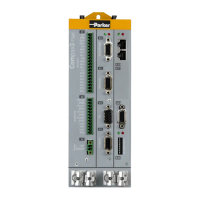
